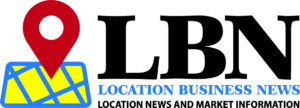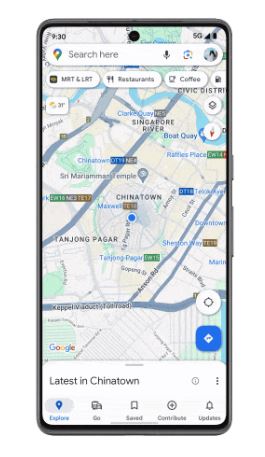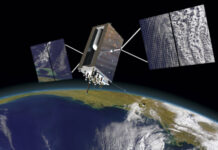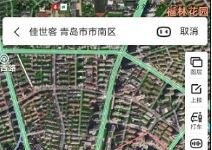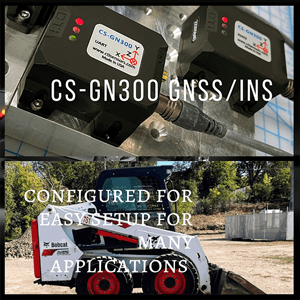Google GOOG 0.26%↑ always has a big presence at MWC. The company announced a slew of Android-related updates, including one that allows Wear OS users to access public transit directions on Google Maps. Google said that users can look up departure times from their smartwatches and get compass-guided navigation directions.
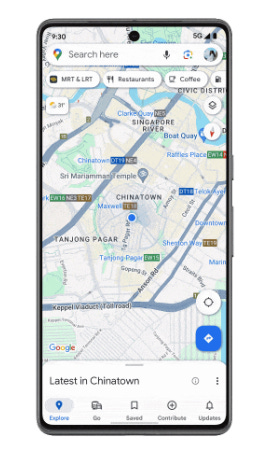
The company also announced an enhanced screen reader support for Lens in Maps, which helps users explore nearby and identify places like ATMs, restaurants and transit stations. In addition, the Google announced, with the help of AI, Android Auto can automatically summarize long texts or busy group chats while users are driving. “It will also suggest relevant replies and actions, so you can simply tap once to send a message, share your ETA or start a call,” the company said.
In other mapping news, as Location Business News reported last week, Mapbox partnered with Snowflake and Maxar Intelligence to offer digital twin mapping solution for the telecommunications industry.
Connected Vehicles Still Big at MWC…
Before the worldwide pandemic, MWC was almost becoming an auto tech show with a slew of automakers and their Tier 1 suppliers. The past three years, this conference hasn’t been an auto show, but a forum for connectivity (except for the rollout of Xiaomi’s SU7 SUV this year).
Such companies as Harmon launched its Ready Connect 5G Telematics Control Unit (TCU), with Qualcomm’s QCOM 0.20%↑ Snapdragon Digital Chassis connected car technologies.
Cisco CSCO 0.00%↑ and TELUS announced at MWC that they are launching new 5G capabilities in North America to serve IoT use cases across industry verticals, with a focus on connected cars. The network will serve as a foundation to “support drive testing by a major North American automotive manufacturer’s 5G Connected Car,” the company said.
Getting back to the most-talked about topic at MWC, AI, Geotab demonstrated its generative AI assistant for connected transportation, Geotab Ace. The solution, first launched at the company’s Geotab Connect user conference, features data-led AI processing capabilities that analyzes 75 billion data points daily.
Overall, MWC was upbeat for many attendees. However, Light Reading’s Mike Dano unloaded on the show with an article titled, “MWC Barcelona Stinks of Quiet Desperation.” Dano said that the undercurrent of MWC is a show of “quiet desperation” because 5G isn’t living up to the “sky-high expectations laid out at previous [MWC shows].” As a result, big vendors and network operators are laying off employees and there is a spending slowdown that isn’t going away.
In other MWC news:
- Ceva CEVA 0.00%↑ rolled out its RivieraWaves ultra-wideband (UWB) IP for FiRa 2.0. Some use cases include private indoor navigation, which enables users of UWB-enabled smartphones or tablets to find their way in indoor positioning systems (such as shopping malls, airports), with centimeter-level accuracy while maintaining location privacy.
- Quectel Wireless Solutions and MediaTek have announced that the Quectel RG620T 5G modules and MediaTek BE7200 Wi-Fi 7 modules have been adopted for mass commercial roll-out in Australia. This deployment is the first commercial, massive volume production use case for the RG620T and will bring 5G fixed wireless access (FWA) to end users across Australia, the company said.
- 1NCE launched high data IoT software for its customers with one price. Use cases include smart metering, street lighting and asset tracking.
- Sequans launched its 5G Broadband: Taurus 5G NR with 1 Gbps speed. The company also rolled out its Calliope 2 module that is designed for industrial IoT and for trackers, security and alarm systems, payment systems, and industrial equipment. The company plans to launch the Monarch 2 GM02S LTE-M/NB-IoT module that supports GNSS.
- Not many location tech announcements from such companies as Ericsson ERIC 0.00%↑, which use indoor 5G positioning systems.
- GSMA, the show’s organizer, said MWC 2024 had 101,000 attendees from 205 nations. There were 2,700 exhibitors and 1,100 speakers.
